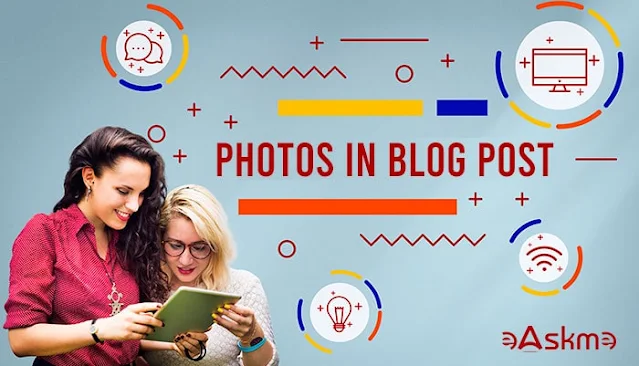There is a certain category of bloggers that hate tinkering with adding photos to their posts. And though their posts for the most part are very informative and quite engaging, they often don’t get the due attention from the audience.
Why is that so?
The answer is quite simple.
 |
| Some Effective Ways to Include Images in Your Posts: eAskme |
Other people are at: What are the Most Popular Image Search Engines?
Nobody wants to read the walls of text without respites.
And images that appear in popular posts serve as great diversions, which allow a reader to take a break and behold a fun picture.
What’s more, by adding images to your content you make the entire reading process easier and more enjoyable.
So, next time that you’re accused of image stinginess, don’t even think about making excuses for it.
If you’re a professional writer with a burning passion for words, figures of speech, and all sorts of oratorical techniques, it’s still your responsibility to make your content more diverse and visually appealing.
If you want your blog to be popular, of course... Below are some effective ways to spruce up your blog post with cool images and photos.
Use Legal Images
You are well aware of the fact that quoting from someone else’s work without giving the author due credit is considered plagiarism, which is a crime.
The same applied to using the images that you don’t have any right to.
If you want to create a truly successful and reputable blog, make sure you keep copyright infringement at the top of your mind every time you start scouring the web for juicy images for your new post.
Though slews of Internet users illegally copy, distribute, and use photos and images belonging to other people on their web pages, you shouldn’t stoop to doing the same.
There are tons of royalty free stock vectors, photos, and images on dedicated websites.
The selection of available photos on such websites is wide enough to satisfy every taste and need.
If you happened to like a particular copyrighted image, though, you can try and ask the author to grant you the right to legally use it on your website by licensing this image to you.
Or, you can always give credit to the original author or link back to the original source.
By doing so, you’ll establish a reputation as an honest, trustworthy, and principled blogger.
Finally, you can incorporate your screenshots as a visual aid to your arguments or personal opinion. It’s legal and quite effective!
Break Up Your Text
As we’ve already noted in the introduction, it can be excruciatingly difficult even for patient readers to digest what you’ve written if your text is not structured and formatted properly.
Instead of making your audience eat the whole elephant at once, let them have one bite at a time.
And images can help you with that.
You want to separate your points from one another using relevant pictures.
Readers are lazy these days.
If they come across a nice yet wordy post, the odds are good they will just skip it and go look elsewhere for the information they need.
Still, if you dilute a lengthy post with relevant and effective images, your chances of hooking your readers’ attention may increase tenfold.
With this in mind, you should always look for nice images that can help you backup your argument and make your content more attractive and easy to understand.
Select Only Clear Images
As a reader you might come across some websites or blogs that had some blurry, unsightly images.
Even though you don’t aim to feast your eyes every time you engage with a post, it’s always good to see a clear and visually appealing picture.
A poor-quality image in your post might prompt your readers to think that your content is no better.
If you don’t bother to select high-quality pictures for your blog, why on earth should your readers believe you can produce high-quality content?
The onus is on you to carefully select the images that appear in your posts.
Not only should they be pleasing to the eye, but also relevant to your content.
Hope our simple tips will help you take your blogging endeavors to the next level!
If you have any questions or suggestions, feel free to ask in the comments.
If you find this post useful, don`t forget to share it on Twitter and Google plus.
Stay tuned with us to stay updated.
Don't forget to follow us on Twitter and join eAskme newsletter to stay tuned with us.
Other Handpicked optimization Guides for You;













